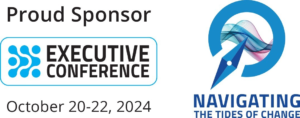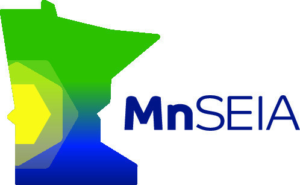
A Guide to Industrial Power Solutions
Are you an engineer looking for a power supply? Energy storage? Electrical protection components? Are you a distributor looking for new suppliers? Or maybe you're an engineering student writing a paper on power systems and power management. You've come to the right place.
For OEMs and distributors, power solutions can mean different things. It can refer to the power fueling your operations, or it can mean the power that drives your products.
Industrial power solutions refers to products that generate, convert, distribute, or store electrical energy, or that protect the circuits on which it travels.
In this article, we describe the various kinds of power solutions that an engineer, purchasing manager, or distributor might need, and list some recommended manufacturers and products. These range from the component level to the system level.
All of the global manufacturers mentioned below have been carefully vetted by ArKco Sales, and if you work in Minnesota, Iowa, Nebraska, North Dakota, South Dakota, or western Wisconsin, their products are available directly through our reps. Supply may also be available through authorized distributors.
Table of Contents:
- Power Generation: Batteries, Chargers, Power Supplies, and Adapters
- Power Conversion: Transformers, Converters, and Inverters
- Power Distribution: PDUs, Busbars, and Circuit Protection
- EMI Filters & Shielding
- Energy Storage: Battery Energy Storage Systems
- Power Solutions by Industry
- Power Solutions by Category
Power Generation: Batteries, Power Supplies, and Chargers
Industrial power generation forms the backbone of any facility, and any powered product or system. Batteries, power supplies, and chargers play a pivotal role in ensuring a continuous and reliable power source.

Batteries
Advanced battery technologies, such as lithium-ion (LiFePO4) and absorbent glass mat (AGM) batteries, provide efficient energy for marine and recreational vehicles, agricultural and construction equipment, and backup power for a wide range of medical and industrial applications. Look for models that come with Bluetooth™ connectivity, to monitor and control battery life via mobile app.
Even sealed lead-acid (SLA) batteries are still in high demand, and the best are extremely rugged and versatile, with high energy density and low discharge rates.
The best battery manufacturers, like Power Sonic, offer outstanding performance with a good warranty at a reasonable lifetime cost.
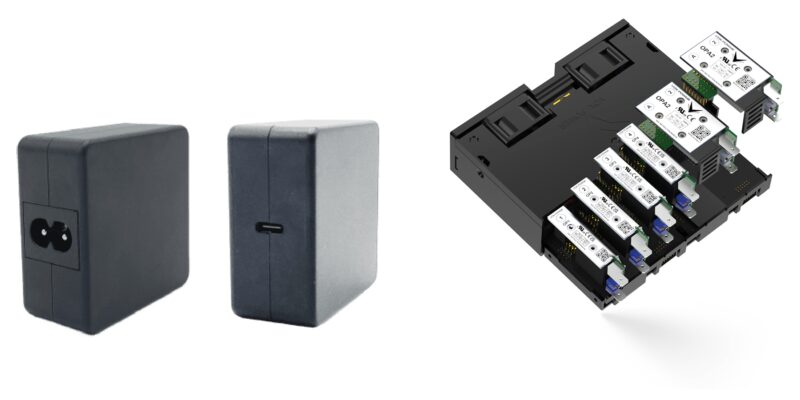
Adapters and Power Supplies
Power adapters—also known as AC adapters—are devices that convert electrical power from one form (alternating current or AC) to another (direct current or DC). They’re essentially the same thing as power supplies; typically the only real difference is that power adapters are usually external to the device or system in question, whereas power supplies are encased in the device or system, with a port for connecting a power cable. These are typically low-output configurations—such as USB-C—for consumer electronics applications.
Adapters are very convenient, as they are portable and swappable. Phihong makes a wide variety of wall mount adapters and desktop adapters. An important subset of adapters offered by Phihong is power over ethernet, or PoE. These adapters—including injectors and midspans or splitters—allow power to be transmitted over ethernet cables.
Power supplies are designed to meet the specific needs of industrial equipment and devices, ensuring a stable and consistent power input. Many act as AC/DC converters, taking the AC power commonly found in homes and buildings and converting it into the DC power needed by a given application.
Factors that engineers look for in a power supply include power density and efficiency; form factor, weight, and footprint; and protection, in terms of ingress, temperature, overcurrent, and EMI. A top-quality power supply such as those made by Vox Power will have accounted for all of these in its design. And Y2 Solution makes custom power modules for LCD displays and EV chargers.
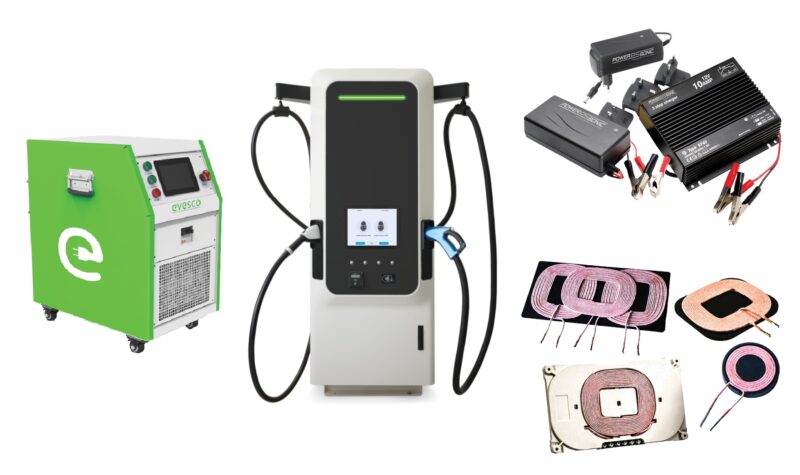
Chargers & EV Chargers
Battery chargers, like those made by Power Sonic, are used strictly to recharge spent batteries.
Wireless chargers use inductive components—such as the Qi-certified wireless charging coils made by Laird Dupont (formerly Laird Performance Materials)—to allow smartphones to recharge their batteries without being plugged in to wall power.
In the rapidly evolving electric vehicle industry, EV chargers need to be fast and dependable. It’s a new industry, and the best manufacturers are those who can also supply their customers quickly and with the best service. Manufacturers like BTC Power and EVESCO offer level 2 AC charging systems and level 3 DC fast-charging systems for electric vehicles.
While some manufacturers of EV chargers and EV charging stations design and build their chargers from the inside out, such as EVESCO, others source custom EV charger power modules from other reliable manufacturers such as Y2 Solution.
Power Conversion: Transformers, Converters, and Capacitors
Virtually all electrical systems and products require the management and optimization of electrical power by transforming voltage levels, converting power between different forms, and facilitating efficient distribution.

Transformers
Power transformers are devices designed to change the voltage of electrical power by transferring energy from one circuit to another through the principle of electromagnetic induction. They consist of primary and secondary coils, and come in many shapes and sizes.
Industrial applications often require transformers to step up or step down voltage levels to meet the specific requirements of different equipment and systems and minimize energy loss.
Basler Electric is a highly reputable supplier of custom-engineered Class 2 transformers for use in low-voltage control circuits.
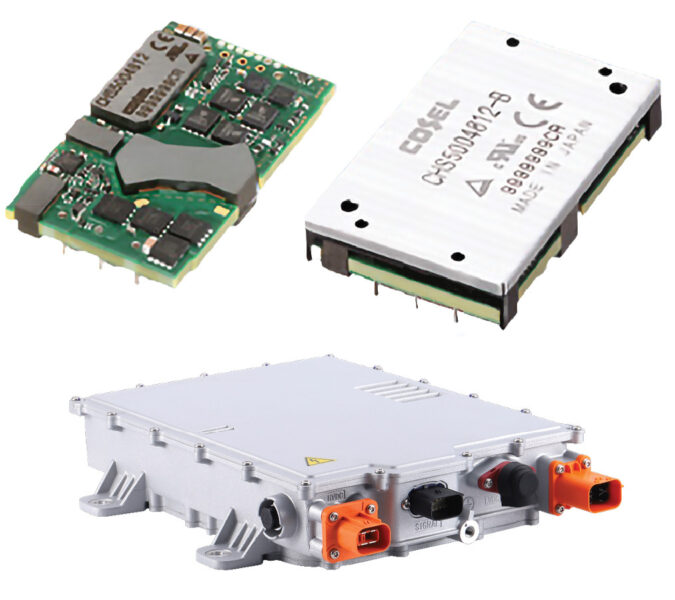
Converters
Power converters switch electrical power between alternating current (AC) and direct current (DC) forms.
In product design across different industries, power converters are essential for adapting power sources to meet the requirements of wildly diverse equipment. They are commonly used in applications such as variable frequency drives, renewable energy systems, and uninterruptible power supplies (UPS).
NetPower produces a range of onboard and offboard, emobility, and isolated and non-isolated DC/DC converters.
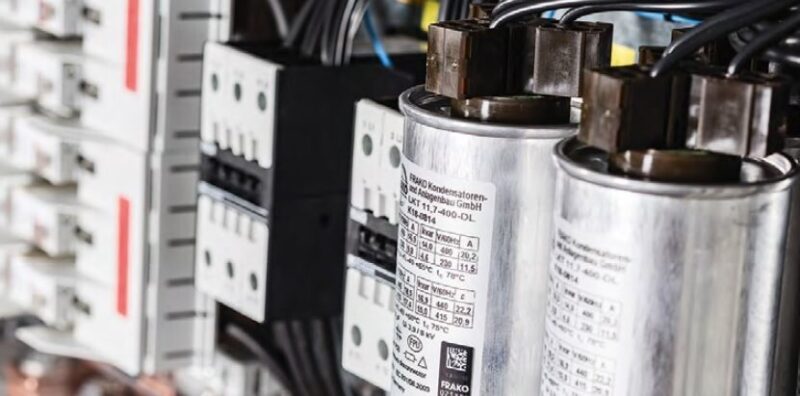
Power Capacitors
Power capacitors, such as those manufactured by Frako, are essential components in electrical systems designed to improve power quality and efficiency. These capacitors store and release electrical energy, functioning as reactive power devices that help manage the phase difference between voltage and current in AC power systems. This ability is crucial for various applications, including power factor correction, power quality improvement, and harmonic filtering.
Power Factor Correction
Power factor correction (PFC) is one of the primary uses of power capacitors. The power factor in an electrical system is the ratio of real power (used to perform work) to apparent power (total power supplied). A low power factor indicates inefficient power usage, leading to higher electricity costs and greater stress on electrical infrastructure. Power capacitors correct the power factor by compensating for the lagging reactive power (typically caused by inductive loads like motors and transformers). By providing leading reactive power, capacitors reduce the total apparent power required, thus improving the power factor.
Power Quality Improvement
Power capacitors contribute to overall power quality by stabilizing voltage levels and reducing fluctuations. In systems with variable loads, such as industrial environments, maintaining consistent voltage is critical to protect sensitive equipment and ensure efficient operation. Capacitors can mitigate voltage drops and sags by providing reactive power support, ensuring that equipment operates within optimal voltage ranges.
Harmonic Filtering
Harmonics are distortions in the electrical waveform, often caused by non-linear loads such as variable frequency drives (VFDs), power electronics, and certain types of lighting. These distortions can lead to overheating, equipment malfunctions, and reduced efficiency. Capacitors for power electronics, often in combination with inductors to form tuned or detuned harmonic filters, help reduce harmonic distortion. This filtering ensures a cleaner, more sinusoidal waveform, enhancing the reliability and lifespan of electrical equipment.
Typical Applications
Industrial Facilities - power capacitors are extensively used for power factor correction to reduce electricity costs and improve the efficiency of large motor-driven systems. Industries with heavy machinery and inductive loads benefit from capacitor banks that maintain a high power factor, ensuring more efficient use of power and compliance with utility regulations regarding power factor penalties.
Commercial Buildings - office complexes and shopping malls use power capacitors to maintain voltage stability and improve power quality. By stabilizing the voltage, these capacitors protect sensitive electronics, lighting systems, and HVAC units from voltage fluctuations that could otherwise lead to equipment failure and downtime.
Data Centers - require highly reliable and stable power supplies, use power capacitors to filter harmonics and improve power quality. Ensuring clean power delivery minimizes the risk of disruptions and enhances the performance and longevity of servers and other critical IT infrastructure.
Renewable Energy Systems - in wind farms and solar power plants, power capacitors are used to manage power quality and integrate renewable sources into the grid. They help in smoothing out the power output, compensating for reactive power, and ensuring the stability of the electrical grid. Note that solar inverters are more frequently used for power factor correction, while capacitors are more commonly found in the harmonic filters used before power can be sent back to the grid.
Utilities - use power capacitors in transmission and distribution networks to improve voltage regulation and reduce losses. By optimizing the power factor and filtering harmonics, utilities can enhance the efficiency and reliability of power delivery to end-users.
Frako's power capacitors are renowned for their extreme safety, durability, efficiency, and advanced technology.
They are designed to operate reliably in challenging conditions, providing solutions for power factor correction, power quality improvement, and harmonic filtering. Frako offers a range of capacitors tailored to various applications, ensuring optimal performance and energy efficiency.
Power Distribution: PDUs, Busbars, and Circuit Protection
Effective power distribution is the backbone of operational efficiency and safety within various devices, systems, and facilities. At its core, power distribution involves the systematic transmission of electrical energy from a primary source to multiple points of use, ensuring a reliable supply to meet diverse demands.
This process encompasses intricate mechanisms such as power distribution units (PDUs), which act as central hubs for managing and allocating power within a system, alongside essential components like busbars and circuit protection devices. Understanding the nuances of power distribution is critical in optimizing energy use, safeguarding against hazards, and maintaining uninterrupted operations in modern industrial and commercial settings.
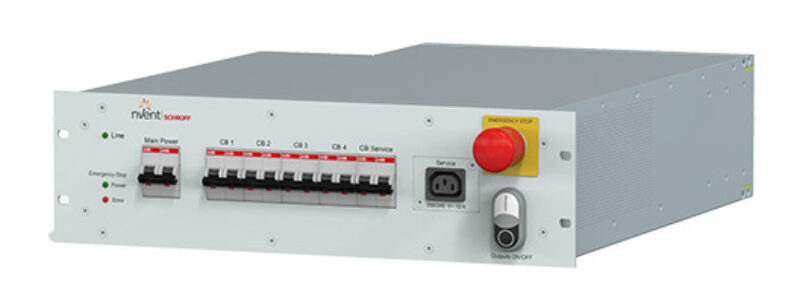
PDUs
Power distribution units or PDUs are devices designed to provide controlled and organized power distribution—often featuring surge protection, overload protection, and monitoring capabilities—to multiple outlets or devices within a facility.
PDUs come in various configurations, such as floor-mounted PDUs, rack-mounted PDUs, cabinet PDUs, wall-mounted PDUs, and portable PDUs. They also come in different basic design types, such as basic or traditional PDUs, maintenance bypass (MBP) PDUs, automatic transfer switch (ATS) and other switch PDUs, metered inlet PDUs and metered outlet PDUs. These last three categories typically comprise what are known as intelligent PDUs, for their remote monitoring, switching, warning, and control features.
Look for manufacturers with well-designed, intuitive online configurators to help you easily design and download CAD files tailored to your specific needs.
nVent Schroff, a global manufacturer of electronics protection cabinets and enclosures, has many such online configurators, and now offers a highly configurable 19” PDU with built-in emergency stop, known as Rack Safety Plus, which we recommend. The configurator for Rack Safety Plus can be found here.
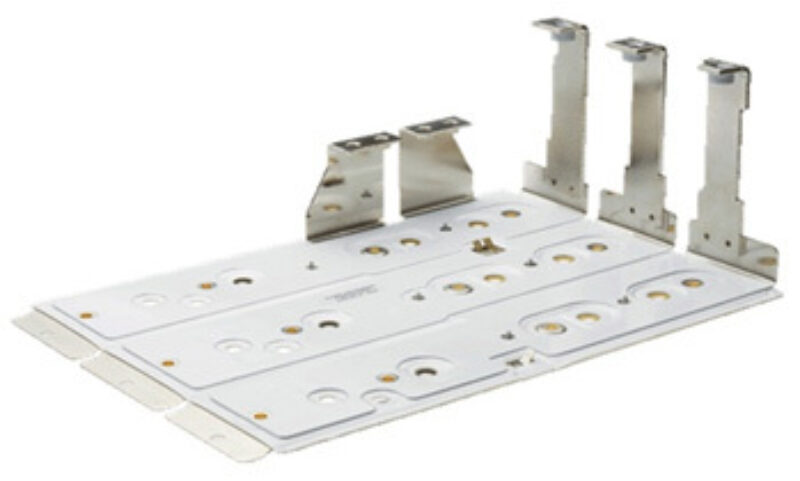
Busbars
Busbars are rigid conductive bars, plates, or strips that serve as a centralized point for distributing electrical power to various components and equipment. They can be insulated or non-insulated. Some are even made to be flexible. Busbars offer a more efficient and compact alternative to traditional wiring systems, reducing the complexity of the electrical distribution network.
Busbars are used in a huge variety of industries, including solar energy, electronics and semiconductor, military and aerospace, transportation, infrastructure, industrial equipment, and construction and agriculture.
Engineers often overlook busbar selection in their designs, relying on familiar suppliers. Yet some applications, such as electric vehicle design, e-mobility, and other electrification applications, benefit from new advances offered by global manufacturers like Mersen. Products like the Infini∞Cell laminated battery cell busbar allow for a smaller footprint, better thermal management, and real-time temperature and voltage monitoring.
Mersen also offers a huge variety of custom busbars, laminated busbars, ultra-low inductance capacitor-and-busbar subassemblies, and other busbar solutions for military, transportation, energy, infrastructure & datacenter, and industrial applications.
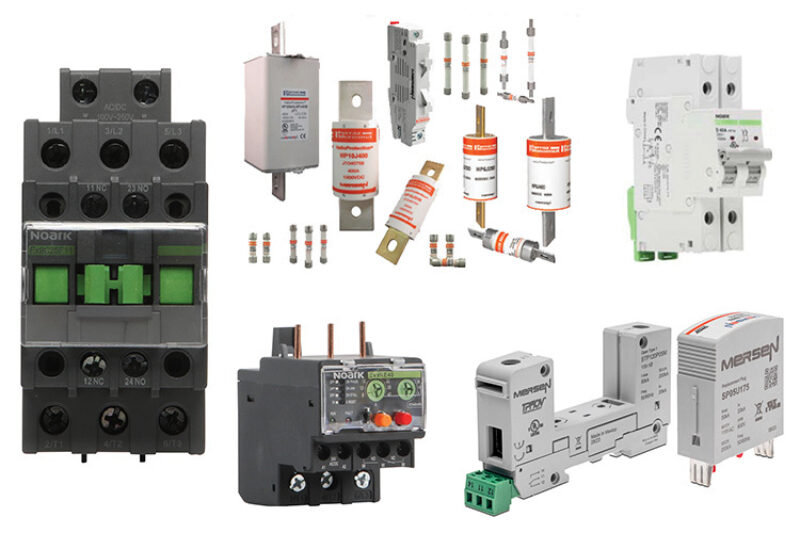
Circuit Protection
Integral to the distribution of power is the safety and reliability of an electrical system. Switchgear and distribution panels are integral to power distribution systems. Switchgear includes devices like switches, fuses, circuit breakers, and surge protection devices (SPDs) and are designed to interrupt the flow of electrical current in the event of a fault, preventing damage to equipment and minimizing the risk of electrical fires.
Mersen meanwhile offers IEC low voltage fuses and fusegear, UL low voltage fuses and fusegear, high- and medium voltage fuses, surge protection, lightning protection, and power monitoring, busbars, power transfer for rail, photovoltaic (solar) fuses, and surge protection for a broad range of industries and applications.
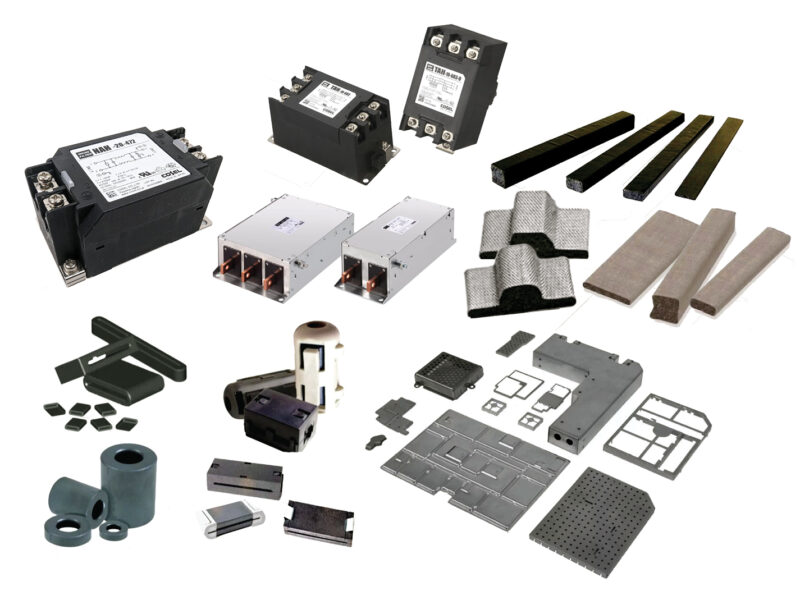
EMI Filters and Shielding
Electromagnetic interference (EMI) refers to the unwanted electromagnetic signals that can interfere with the proper functioning of electronic devices and systems. Mitigating EMI is essential to ensure the stability and reliability of electrical systems.
EMI filters are components designed to suppress or attenuate unwanted electromagnetic interference, preventing it from affecting sensitive electronic circuits and devices. These filters are integrated into power lines to reduce the transmission of high-frequency noise generated by various sources, such as motors, transformers, or radiofrequency interference (RFI). EMI filters enhance the performance of electronic equipment, minimize signal distortion, and can help products comply with electromagnetic compatibility (EMC) standards.
Shielding solutions complement EMI filters by providing a physical barrier against electromagnetic radiation. Shielding materials, often made of conductive metals like aluminum or copper, are strategically placed around sensitive components or entire electronic enclosures. This shielding prevents electromagnetic fields from penetrating or escaping, confining the electrical noise within a designated area and protecting nearby equipment from interference.
Laird Dupont (formerly Laird Performance Materials) manufacturers a huge range of EMI products that include metallic board-level shielding (BLS), fingerstock metal gaskets, surface-mounted (SMD) metal contacts, conductive foam gaskets, EMI tapes, electrically conductive elastomer (ECE) gaskets, fabric-over-foam (FOF) gaskets, as well as inductive components such as common mode chokes and ferrite beads, sheets, rods, chips, toroids, plates, and disks.
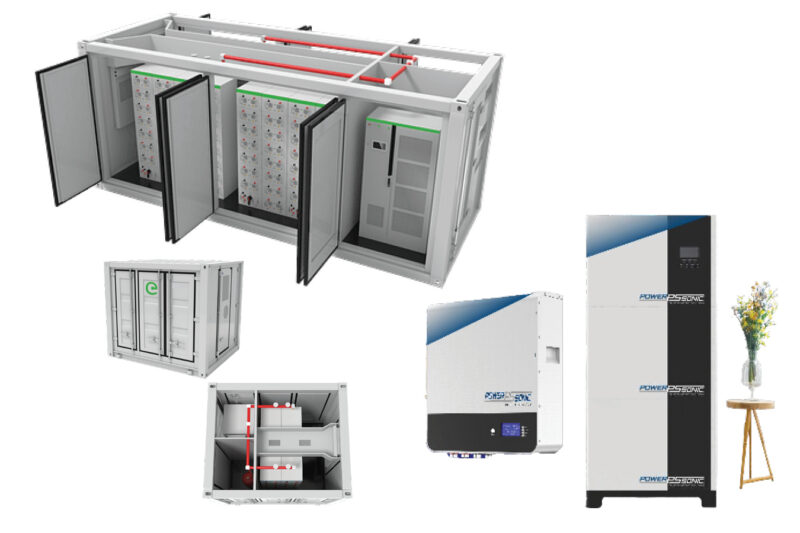
Energy Storage: Battery Energy Storage Systems
Energy storage solutions are integral to balancing power supply and demand. Battery energy storage systems (BESS) store excess energy during periods of low demand and release it during peak times. This not only optimizes energy usage but also contributes to grid stability.
For solar installers in residential, commercial and industrial (C&I), and utility-scale markets, battery energy storage is extremely useful, since sunlight isn’t available and producing power at the same time that the power is needed for consumption.
For commercial and industrial businesses in particular, containerized BESSs such as those from EVESCO offer a modular, scalable solution to peak demand charges: a common practice of energy utilities to charge increased rates during peak usage hours. For factories and office buildings that draw a lot of power, these peak demand charges become a huge expense. Battery energy storage is quickly becoming a cost-effective way for facilities managers to save on monthly energy costs.
Another high demand application is off-grid mobile EV charging units. These are EV charging systems that are combined with a battery energy storage system to provide fast EV charging in places and circumstances where access to reliable grid power is limited or prohibitively costly. Emergency services, rural fueling stations and service stations, national parks and state parks, properties with limited power, and organizations that wish to limit their dependence on fossil fuels may opt to combine an off-grid BESS with some form of alternative energy source.
EVESCO not only manufactures commercial, industrial, and utility-scale containerized BESSs, but is also developing residential systems (under the brand of its parent company, Power Sonic) for both EV charging and for home energy storage and use. These may be integrated with solar installations or work directly with grid power to decrease reliance on aging infrastructure and costly utilities.
Power Solutions by Industry
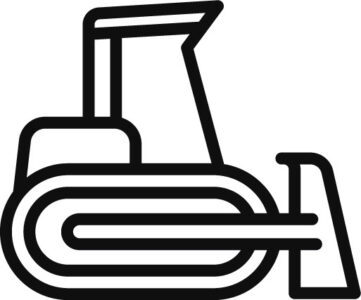
Power Solutions for the Agricultural & Construction Equipment Industry
The agricultural and construction equipment industry demands robust and reliable power solutions to drive productivity, efficiency, and safety in demanding environments.
Traditional diesel engines and generators are still the most commonly used source of power, but as demand for power, efficiency, and cleaner energy increases, equipment manufacturers are looking both at system-level solutions and at individual components to drive competitive advantage.
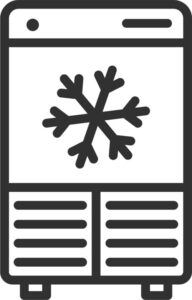
Power Solutions for Commercial/Industrial Appliances Industry
Overall, the past decade has witnessed significant changes in the power needs of appliances. These are driven by advances in technology, evolving consumer preferences, and regulatory pressures. Manufacturers continue to innovate in power supply design and energy management to meet the demands for energy-efficient, connected, and reliable appliances in the modern marketplace.
The design and manufacture of commercial and industrial appliances are increasingly incorporating battery energy storage
for backup power, load leveling, or energy management purposes—see the battery energy storage systems made by EVESCO (and the new residential Pulse system from Power Sonic!).
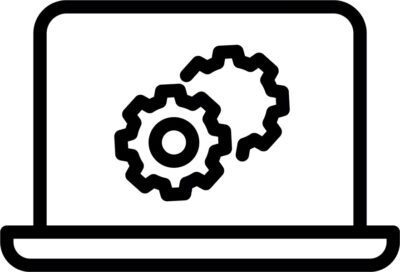
Power Solutions for Information Technology (IT) & Data Storage Industry
Power needs in IT—as well as in the data processing and storage industries—are being shaped by the increasing demand for higher performance, energy efficiency, scalability, and reliability.
One prominent trend is the rapid expansion of data centers to support the exponential growth of digital data generated by cloud computing, big data analytics, artificial intelligence, and Internet of Things (IoT) applications. This growth has led to a focus on optimizing power infrastructure within data centers to minimize energy consumption, reduce operational costs, and mitigate environmental impact.
Consequently, there's a rising adoption of energy-efficient hardware, such as servers, storage systems, and networking equipment, along with innovative cooling solutions and modular, scalable power distribution architectures and enclosures.
Additionally, there's a growing emphasis on renewable energy sources and power management strategies to achieve sustainability goals and enhance resilience against power disruptions. Battery energy storage systems are increasingly favored as a hedge against power disruptions and peak energy charges
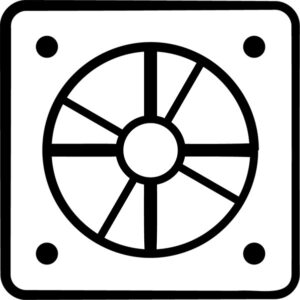
Power Solutions for the HVACR Industry
In the heating, ventilation, air conditioning, and refrigeration (HVACR) industry, rising energy costs are driving innovation. Manufacturers are developing more efficient HVACR fans and blowers, incorporating technologies such as variable-speed drives, energy recovery systems, and advanced control algorithms to minimize energy consumption and greenhouse gas emissions. New innovations in high-volume, low-speed (HVLS) fans can regulate temperatures in large spaces much more efficiently and comfortably than the massive Casablanca-style fans of the past.
Another trend is the integration of smart and connected features into HVACR systems, enabling remote monitoring, optimization, and predictive maintenance through IoT (Internet of Things) platforms and cloud-based analytics. This connectivity requires reliable power solutions to support the operation of sensors, actuators, and communication modules.
Additionally, there is a growing demand for HVACR systems that can operate with renewable energy sources, such as solar or geothermal power, further emphasizing the need for adaptable and efficient power management solutions in the industry. For homes and commercial buildings that use solar energy, for example, appropriate surge protection, fuses, and battery energy storage are in high demand
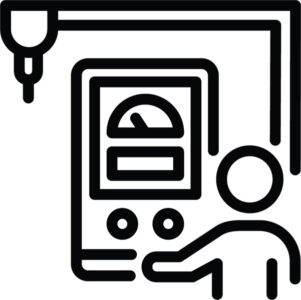
Power Solutions for Industrial Equipment
The design and manufacture of industrial equipment requires robust power distribution systems, incorporating components such as transformers, circuit breakers, protective cabinets and racks, and bus bars, to efficiently manage and distribute electrical power throughout the equipment.
Additionally, power supplies and converters are critical for providing the necessary voltage and current to drive various electronic components and subsystems within industrial equipment.
Battery energy storage systems may also be integrated to provide backup power or support regenerative braking systems
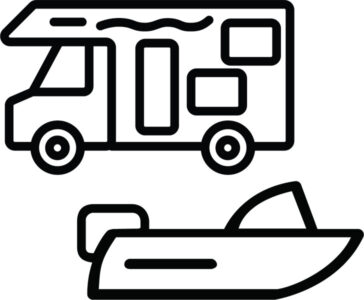
Power Solutions for Marine/RV & Recreation Industry
Harsh environments are the name of the game in this industry. Electrical systems need to be robust, equipped with marine-grade batteries and inverters capable of supplying power for lighting, appliances, navigation equipment, and onboard electronics such as weatherproof CANbus keypads.
Additionally, solar panels and wind turbines are increasingly integrated to provide renewable energy and supplement onboard power generation and battery energy storage.
Power management systems, such as Bluetooth battery monitors and charge controllers, play a crucial role in optimizing energy usage, extending battery life, and preventing overcharging or discharging. Surge protectors and electrical safety devices are also vital for safeguarding against voltage spikes, electrical faults, and fire hazards, ensuring the safety of occupants and equipment onboard. IP-rated cable assemblies, jacks, and connectors are crucial for marine and recreational vehicles, as are ruggedized braided sleeving products to further protect those components.
Overall, the marine and RV industry relies on a comprehensive suite of power solutions and components to meet the diverse needs of travelers and adventurers while ensuring reliability, efficiency, and safety in remote or off-grid environments
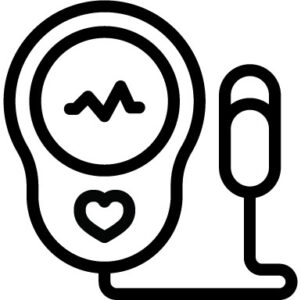
Power Solutions for Medical Devices
Reliable operation, patient safety, and regulatory compliance are critical in the design of medical devices. Sensitive electronic components and medical instruments often require efficient, high-density power supplies and battery technologies, to provide stable and uninterrupted power. Advanced energy storage tools, such as batteries and eMobility chargers, are essential for powering portable and implantable medical devices.
Surge protection devices and EMI filters are employed to safeguard against electrical disturbances and ensure electromagnetic compatibility in medical environments. Moreover, precision voltage regulators, converters, and inverters play a critical role in maintaining precise voltage levels and power quality for sensitive equipment, such as imaging systems and diagnostic devices.
For equipment with higher value electronics such as MRI machines, special devices such as the EESeal from Quell Corporation can retrofit any connector into a reliable EMI filtered connector at relatively low cost and almost no effort.

Power Solutions for Military and Aerospace Industry
Power solutions and components for military and aerospace applications must meet stringent standards for reliability, performance, and safety in harsh and demanding environments. These applications often involve specialized power systems, including high-voltage power distribution units, custom-spec uninterruptible power supplies (UPS), and advanced battery energy storage systems to ensure mission-critical equipment remains operational under extreme conditions.
Additionally, components such as ruggedized connectors, EMI seals, cable assemblies, and jacks, harsh-environment braided sleeving products, and circuit protection devices are essential for maintaining secure and reliable electrical connections in aerospace and military systems.
Power management and monitoring systems, including voltage regulators, frequency converters, and thermal management solutions, play a crucial role in optimizing power usage, preventing overheating, and maximizing efficiency. Some military agencies are also investigating microgrids and sustainable energy sources, putting battery energy storage systems and other electrification systems in high demand.
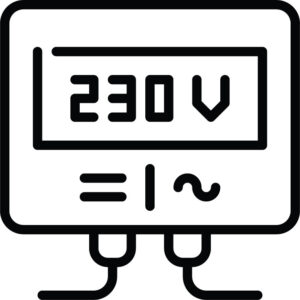
Power Solutions for Power Generation and Renewable Energy Industries
While solar power systems rely on photovoltaic (PV) panels to convert sunlight into electricity, inverters to convert DC power to AC power suitable for grid connection or use, and battery energy storage systems are needed to store excess energy for later use or during periods of low sunlight. EV chargers may be integrated with these systems to make cost-efficient use of DC power for solar energy.
Components such as sensors, relays, and protective devices play vital roles in ensuring safe and reliable operation, as well as in enabling predictive maintenance and fault detection in power generation and renewable energy systems. Advanced monitoring systems, grid integration technologies, and energy management solutions help optimize performance, maximize efficiency, and ensure reliable power supply.
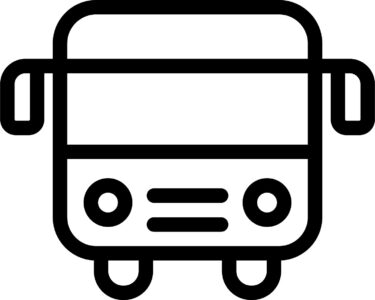
Power Solutions for Transportation Industry
From buses to trains to ferries to modern automotive fleets, the transportation industry is witnessing a major reckoning with their fundamental designs, as trends toward electrification, driverless technology, and advanced cybersecurity all shape metropolitan markets.
In terms of power, advanced powertrain systems have begun incorporating electric motors, battery energy storage, SMART displays, and power electronics for hybrid and electric vehicles. Additionally, sophisticated engine control units (ECUs) and sensors enable precise monitoring and optimization of engine performance, emissions, and fuel consumption. Onboard racks and panels house, protect, and connect systems to enable remote monitoring, diagnostics, and fleet management.
Inside the manufacturing plant and garage, power distribution units, circuit breakers, and surge protection devices ensure reliable power supply and safeguard against electrical faults.
Power Solutions by Product Category
AC/DC power supplies
Battery energy storage
Batteries
Bluetooth batteries
Lithium (LiFePO4) batteries
Sealed lead acid (SLA) batteries
Acrylic Glass Mat (AGM) batteries
Busbars
Chargers
Circuit breakers
Contactors
DP contactors
IEC contactors
DC/DC converters
EMI filters
EMI shielding & gaskets
Board-level shielding
Fabric-over-foam (FOF) gaskets
Fingerstock metal gaskets
Gap filler pads
RF absorbers
Emobility converters
Ferrites, ferrite beads, ferrite cores
Fuses
Inductive components
Manual motor starters
Power distribution units (PDUs)
Power adapters
Power over ethernet (PoE) injectors
Power over ethernet (PoE) midspans
Power supplies
Power supply modules
Surge protection devices
Transformers
Related articles
- HMI
- Enclosures & Connectors
- Thermal Management
- Electrification


